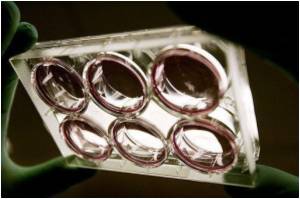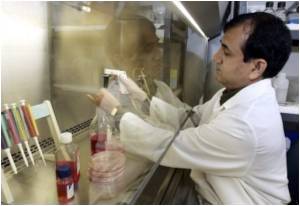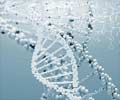
Today, researchers are challenging traditional assumptions about transplant eligibility and donor matching in an effort to expand the universe of patients who can benefit from this treatment while improving long-term success rates. New findings presented today indicate that with proper considerations, haploidentical (half-matched) transplants or transplants using cord blood cells can be viable, effective alternatives when a fully matched donor is not available. Researchers also contend that transplant outcomes can be further improved by identifying patients who are at high risk for certain complications, such as cognitive decline, or by employing post-transplant treatments to reduce their risk of relapse.
"The exciting research results being presented today underscore how transplants are becoming an increasingly successful treatment option for more patients with blood cancer than ever before," said Jeffrey Miller, MD, moderator of the press conference and Deputy Director of the Masonic Cancer Center and the Clinical and Translational Sciences Institute at the University of Minnesota in Minneapolis. "Whereas transplant would not have been an option for many patients without a sibling or other perfectly matched donor even several years ago, exciting new strategies have afforded them the opportunity to gain significant benefit from this procedure today. As we are now able to focus our efforts on improving the overall patient experience and reducing the risk of relapse, the leading cause of death after transplant, we have greatly improved long-term survival outcomes for patients who before might not have had another treatment option."
This press conference will take place on Saturday, December 7, 2013, at 10:00 a.m. CST.
Encouraging Outcomes in Older Patients (Pts) Following Nonmyeloablative (NMA) Haploidentical Blood or Marrow Transplantation (haploBMT) With High-Dose Posttransplantation Cyclophosphamide (PT/Cy) [158]
To more fully demonstrate the utility of haploidentical bone marrow or peripheral blood stem cell transplants (haploBMT) as an alternative to fully matched transplants, this study evaluated nonmyeloablative, related haploBMT (with post-transplantation cyclophosphamide) among patients aged 50 – 75 with poor-risk hematologic malignancies. Results of 273 such transplants performed at Johns Hopkins were compared to determine the impact of older age on outcomes. The two-year probability of progression-free survival was very similar among patients in their 50s, 60s, and 70s (39, 36, and 39%, respectively), as was the two-year probability of overall survival (51, 56, and 44%). Among these age groups, there were also no statistically significant differences in the risks of non-relapse death or severe graft-versus-host disease.
Advertisement
Dr. Kasamon will present this study during an oral presentation at 5:15 p.m. CST on Sunday, December 8, in Rooms 208-210 of the Ernest N. Morial Convention Center.
Advertisement
Source-Eurekalert













